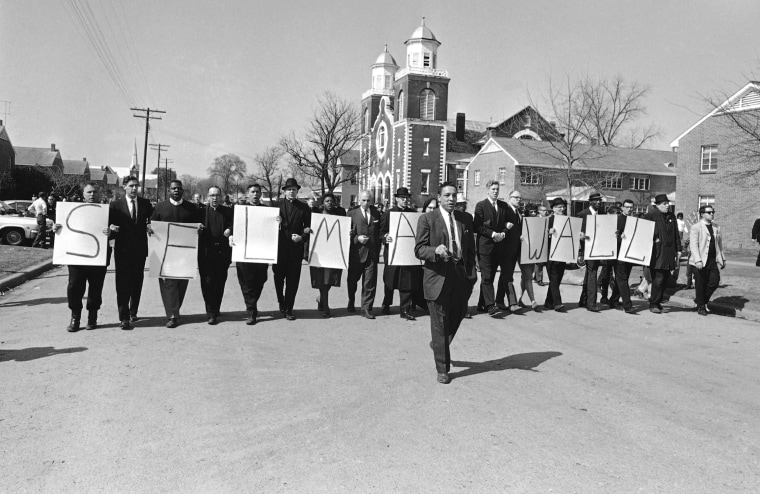Like religious congregants all over, the people of historic Brown Chapel AME Church turned off the lights and locked the doors at the beginning of the Covid-19 pandemic because it wasn’t safe to gather for worship with a deadly virus circulating. For a time, the landmark church that launched a national voting rights movement in Selma, Alabama, was off limits.
What members found when they returned was heartbreaking: Termites had eaten so much wood that parts of the structure weren’t stable anymore, said member Juanda Maxwell, and water leaks damaged walls. Mold was growing in parts of the building, where hundreds met before Alabama state troopers attacked voting rights demonstrators on Bloody Sunday in 1965 at the Edmund Pettus Bridge.
“It’s in horrible shape,” said Maxwell. “It’s a tough time. Because we were closed for a year it exacerbated the problem with water coming in.”
The red brick church, with distinctive twin bell towers and a domed ceiling, tops this year’s list of the nation’s most endangered historic places, according to the Washington, D.C.-based, National Trust for Historic Preservation, a nonprofit organization which works to highlight and preserve sites that are in danger of being lost. Other places on the list include:
- Chicano/a Murals painted on the sides of buildings in Colorado and inspired by the human rights and cultural movements of the 1960s and ’70s.
- The Deborah Chapel, a Jewish mortuary building established in 1886 in Hartford, Connecticut.
- Francisco Sanchez Elementary School, the closed centerpiece of the town in Umatac, Guam.
- Minidoka National Historic Site, where more than 13,000 Japanese Americans were incarcerated during World War II in Jerome, Idaho.
- Camp Naco, a base for Black Buffalo Soldiers dating back to 1919 along the U.S.-Mexican border in Naco, Arizona.
- Picture Cave in Warrenton, Missouri, which holds indigenous artwork dating as far back more than 1,200 years by the Osage Nation.
- Brooks Park Art and Nature Center, the home and art studio in East Hampton, New York, of James Brooks and Charlotte Park, who were important in the abstract expressionism movement in American art.
- Palmer Memorial Institute, a boarding school built in 1902 for Black youths in Greensboro, North Carolina.
